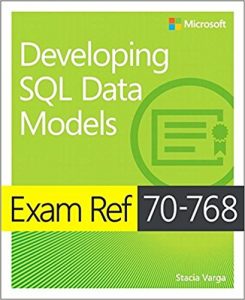 Every year around this time, I start thinking about Spring Training.
Every year around this time, I start thinking about Spring Training.
No, not THAT Spring Training, the other Spring Training that I’ve been teaching for many years now in the ‘burbs of Chicago as a partner of the incredible SQLskills team, IEBI: Immersion Event on Business Intelligence. The next IEBI is scheduled for May 1 – 5 2017, and I can’t wait!
After many years of teaching this course following much the same format, with periodic updates to reflect the features in the version of SQL Server current at the time, I decided to do a more significant overhaul this year.
It’s not that people didn’t love the course, but sometimes other experiences lead you to rethink what’s important to teach and whether there’s a better way to go about it. If something works well in the course, why does it work? If it doesn’t work, what’s the reason for that? Feedback at the end of IEBI is always welcome and drives improvements in the next version of the course, but fundamentally its structure has not changed much over time. Until this year…

You see, I recently finished writing Exam Ref 70-768: Developing SQL Models to help people prepare for a certification exam that tests their knowledge of building, querying, and administering multidimensional and tabular models. (The book is due out in June 2017 at this point.) This style of book has certain requirements that I had to fulfill, such as aiming for a certain page count while covering the subject matter as thoroughly as possible.
As an author that normally has free rein over the structure (although page count is always a limiting factor), I found these restrictions to be quite a challenge. The overarching requirement was to structure the book to match the objective domain, which is the outline of the skills measured by the exam.
Because there are four top-level skills in the objective domain, I had to write four chapters at roughly 100 pages per chapter. (That’s an incredibly long chapter, I know, but those are the rules for this series.) Now, you must remember that the book is intended to be a study guide to confirm your knowledge of important topics and point you to additional resources rather than to be your first exposure to the information covered by the exam. This caveat is included in the book’s introduction if anyone reads that section…
Nonetheless, while I was writing, I kept thinking that I would not teach these topics in a classroom in this sequence. And even though I’ve taught these topics many times over many years in many ways, this recent experience led me to re-evaluate the IEBI course and consider new ways to explain important material succinctly and in the sequence that I think is most conducive to learning.
Therefore, I restructured the IEBI to accommodate these ideas. But IEBI isn’t limited to learning about multidimensional and tabular models. It includes related topics to give you the knowledge to put many pieces together across the Microsoft data platform so that you can build a viable, end-to-end solution. Our spring training week includes the following game plan:
- Lay a foundation with data warehousing concepts
- Learn how to shortcut the ETL process by using Biml
- Understand how to select the BI semantic model that’s right for each situation
- Review key steps to build and query both types of BI semantic models
- Learn how to communicate with data effectively by using the right tools in the right way
- Develop a plan to secure, manage, and monitor your end-to-end solution
IEBI is not like any class you can find in a traditional learning center that provides 6.5 hours of training per day and it’s much more personalized than anything you can learn from a book. It’s intense, it’s immersive, and it’s incredible! We spend long days together in the classroom (8:30 am – 5:45 pm) and we often spend time in the evenings talking over dinner about your specific challenges.
There’s still time to register. Come get your spring training on, and be in tip-top shape for your next big BI game!
1 Comment
Nice! thanks for sharing valuable information